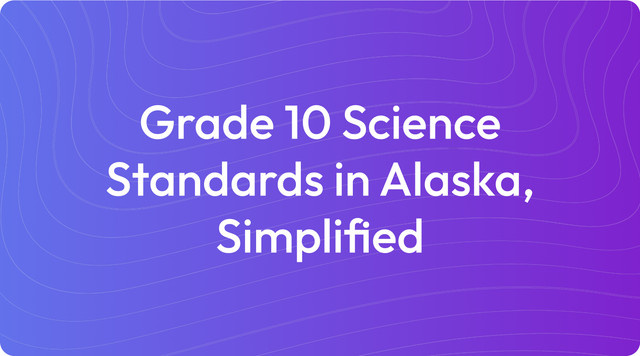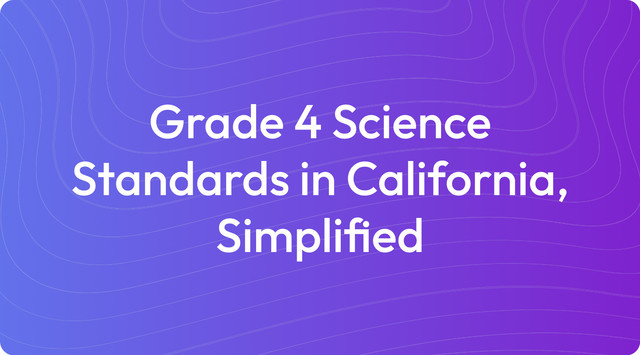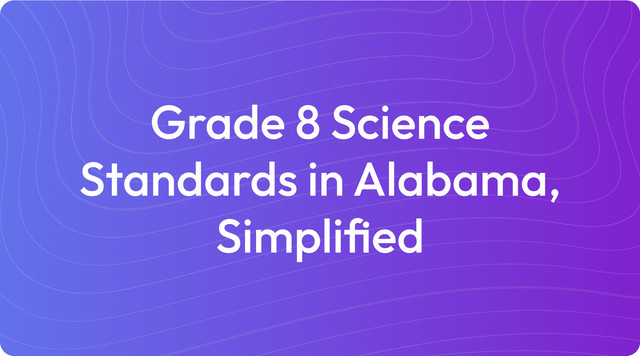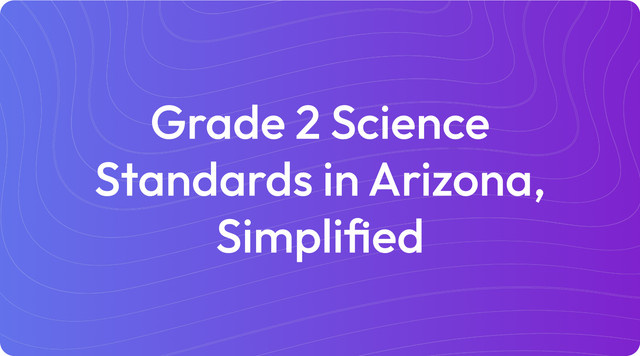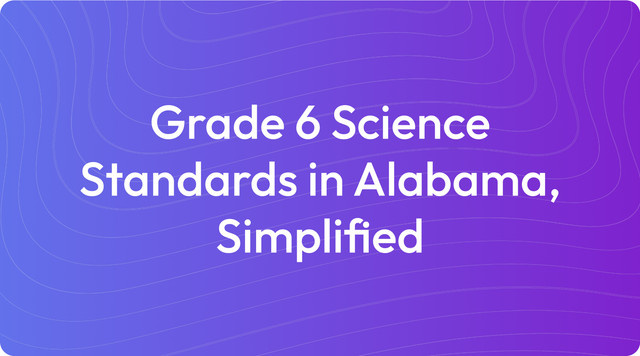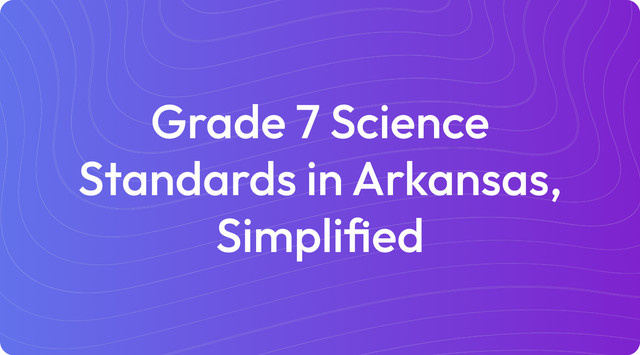Grade 12 Science Standards in Alaska, Simplified
Grade 12 science in Alaska includes advanced science, electives, and applied knowledge for graduation. Explore more—read on TeachShare!Grade 1 science standards in Alaska introduce light, sound, the human body, and space cycles. See what’s covered—read more on TeachShare!
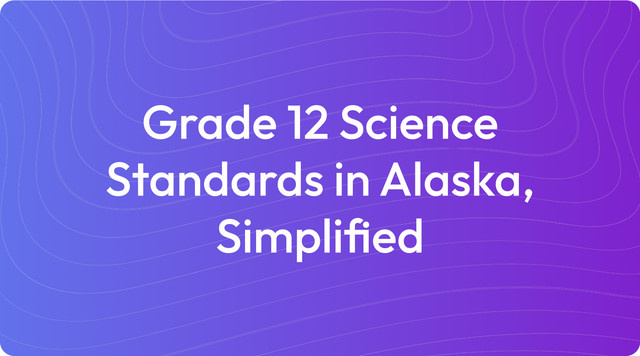
We understand that working with education standards can be a complex part of your role. These guidelines are foundational to curriculum planning, but questions often arise about how to best apply them in the classroom. We're here to offer some clarity and support as you work with these important frameworks.
Education standards are essentially learning goals that outline what students are expected to know and do at a specific grade level. For you, they serve as clear benchmarks for instruction, but they do not prescribe how you should teach. For instance, a 12th-grade science standard in Alaska might require students to construct an explanation for how natural selection leads to adaptation, providing a clear learning objective while leaving the instructional approach to your professional judgment.
What Are Grade 12 Science Standards in Alaska?
The Grade 12 Science Standards in Alaska are designed to build on students' prior knowledge, preparing them for college-level science, potential STEM careers, and informed citizenship. These standards, adapted from the Next Generation Science Standards, cover advanced concepts in Physical Science, Life Science, and Earth and Space Science, with Engineering Design integrated throughout. The focus is on applying knowledge through hands-on learning, data analysis, and making connections to Alaska’s unique environment.
The key learning goals for high school science are organized into the following domains:
- Physical Science: Students investigate concepts like chemical equilibrium, energy transfer, and wave technologies, with a focus on applications such as renewable energy.
- Life Science: Students explore photosynthesis, genetics, and natural selection to understand ecosystem dynamics and species survival.
- Earth and Space Science: Students analyze climate change, the carbon cycle, and planetary motion, often using Alaska-specific examples like permafrost and glacial changes.
- Engineering Design: Students learn to design, test, and refine solutions for real-world challenges, including sustainable energy and environmental conservation.
- Connection to Alaska: The curriculum encourages the study of local topics, including Arctic ecosystems, regional energy challenges, and the effects of climate change on Alaska’s environment.
The framework for these standards is guided by the Science Standards for Alaska, which are based on the Next Generation Science Standards. These guidelines emphasize critical thinking and problem-solving to prepare students for future success.
Key Tested Standards
While the official Alaska Science Assessment is administered in grades 5, 8, and 10, the high school standards outline the essential knowledge your students are expected to master by graduation. These standards provide a clear framework for the core scientific concepts and practices to focus on for Grade 12 students, ensuring they are prepared for their next steps.
The key standards for high school are organized into four main domains:
- Physical Science (PS): Matter, Energy, and Waves
- Life Science (LS): Genetics, Evolution, and Ecosystems
- Earth and Space Science (ESS): Systems and Climate
- Engineering Design (ETS): Problem-Solving
Source: Next Generation Science Standards
Source: Alaska Department of Education & Early Development
Example Learning Objectives for Unit Planning
Learning objectives are clear, measurable statements that articulate what you want your students to know or be able to do by the end of a lesson or unit. They act as a roadmap for your instruction and provide a clear benchmark for assessing student understanding. To help with your unit planning, here are some example learning objectives aligned with the key standards for each domain:
Physical Science
- I can adjust chemical reaction conditions, such as temperature or concentration, to optimize product yield at equilibrium.
- I can model how energy is transferred between objects using electric or magnetic fields.
- I can evaluate communication technologies, such as fiber optics and satellites, to determine their advantages and limitations.
Life Science
- I can model how photosynthesis converts light energy into chemical energy that supports ecosystems.
- I can analyze genetic inheritance patterns and explain how DNA determines traits passed to offspring.
- I can explain how natural selection causes populations to adapt to environmental changes, like warming Arctic climates.
Earth and Space Science
- I can create a model to explain the cycling of carbon through Earth’s atmosphere, oceans, and biosphere.
- I can analyze climate change data and predict its effects on Alaska’s ecosystems and communities.
- I can use mathematical models to predict the motion of planets or moons in the solar system.
Engineering Design
- I can design and test a renewable energy system to meet the needs of a rural Alaskan community.
- I can use simulations to evaluate how environmental solutions, like carbon capture systems, reduce human impact on Earth’s systems.
Key Changes & Updates
The recent updates to the standards are designed to make science more tangible and relevant for your students. There is a greater emphasis on real-world problem-solving, particularly with issues that directly impact the state. This includes a focus on Alaska-specific topics like the effects of melting permafrost, the adaptations of Arctic species, and the development of sustainable energy for remote communities.
In addition to content, the updates also shift how learning is demonstrated. You’ll find an increased expectation for using technology, such as simulations and data modeling, to explore scientific concepts. The standards also integrate math and literacy skills more directly, requiring students to analyze quantitative data and construct well-reasoned, evidence-based arguments.
Create with TeachShare
We know that keeping up with standards while creating fresh, relevant materials is a constant challenge. Our platform is designed to help you build high-quality, standards-aligned lessons, activities, and assessments quickly, giving you more time to focus on what you do best—teaching. Ready to simplify your planning? Start creating standards-aligned instructional resources with TeachShare now.
Frequently Asked Questions
What are the main topics covered in Grade 12 Science in Alaska?
Grade 12 science in Alaska is designed to give students a well-rounded understanding of key scientific fields. Here’s a look at the core areas you'll be covering:
- Physical Science: Students explore chemical equilibrium, how energy moves through electric and magnetic fields, and the science behind modern communication like fiber optics.
- Life Science: This area covers the fundamentals of life, including photosynthesis, genetics and inheritance, and how natural selection helps species adapt.
- Earth Science: Focuses on large-scale systems, like the carbon cycle, the effects of climate change, and the physics of planetary motion.
- Engineering Design: Students learn to think like engineers by designing solutions to complex problems, such as creating renewable energy systems.
How are the standards connected to Alaska’s environment?
The standards are deeply rooted in Alaska’s unique environment, making the science immediately relevant to your students' lives. They encourage you to connect lessons to local examples, such as:
- Studying how glacial erosion has shaped the landscapes students see every day
- Investigating how local species, from Arctic foxes to salmon, adapt to their specific habitats
- Tackling real-world challenges like designing renewable energy solutions for remote communities
- Analyzing the local impact of permafrost melt on both ecosystems and infrastructure
What are some examples of hands-on activities for Grade 12 Science?
The curriculum encourages plenty of hands-on learning to bring complex concepts to life. Here are a few ideas to get you started:
- For Physical Science: You can run experiments to adjust reaction rates or use models to show energy transfer with magnets.
- For Life Science: Students can create diagrams of photosynthesis or use family pedigrees to see how genetic traits are passed down.
- For Earth Science: Activities can include modeling the carbon cycle or analyzing local climate data to predict future trends in Alaska.
- For Engineering Design: Challenge students to design and test a small-scale renewable energy system for a model community.
How do these standards prepare students for the future?
These standards are built to equip students with practical skills and knowledge for whatever comes next. They help prepare students for the future by:
- Building a path to STEM careers: Through engineering projects and data analysis, students gain technical skills that are valuable in many science and technology fields.
- Creating a strong foundation for higher education: The curriculum provides the background needed for college-level courses in biology, chemistry, physics, and environmental science.
- Fostering global awareness: Students learn to think critically about major global issues like climate change and sustainability, preparing them to be informed and responsible citizens.
What are the key changes to the Grade 12 Science standards?
The latest updates to the standards introduce a few key shifts in focus to keep the curriculum current and effective. Here are the main changes to be aware of:
- More real-world problem-solving: There's a greater emphasis on applying scientific concepts to practical challenges like resource management and climate change.
- Focus on Alaska-specific topics: The standards now more directly encourage lessons that connect to local ecosystems, industries, and community needs.
- Increased use of technology: Students are expected to use simulations and computational tools to model data and test solutions.
- Integration of other subjects: Science lessons are designed to incorporate math and literacy skills, asking students to work with data and write evidence-based arguments.
- A stronger focus on sustainability: Students will explore human impacts on the environment and design solutions for a more sustainable future.
Answer


